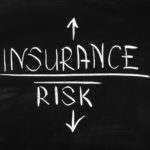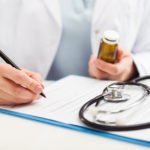[su_box title=”Keep in mind…” style=”default”]
- Most health insurance plans cover annual mammograms
- Women between the ages of 40 and 74 should have a mammogram every two years
- Women considered high risk should have a mammogram every year
[/su_box]
With one woman dying each minute from breast cancer, exams and tests such as mammograms have been recognized essential tools for early detection of breast cancer.
Because of legislation by both federal and individual state governments, most health insurers plans are required to cover such preventative care as breast cancer exams. It is best to check with your health insurer to see what exactly is covered under your policy.
Many states require health insurance companies to cover mammograms every two years for those women who are at normal risk for breast cancer between the ages of 40 and 74 and yearly for those who are at high risk.
A baseline mammogram is also mandated by most states for women between the ages of 35 and 39. The coverage usually includes an interpretation of the results by a doctor.
Plan for your future today by using our FREE online tool to compare health insurance quotes!
What if I do not have health insurance?
Women who have dense breast tissue may be told by their doctor that they need to have a magnetic resonance imaging (MRI) scan of their breasts to rule out cancer.
A mammogram does not always find cancer in dense breast tissues. You will need to check with your health insurer before this test to see what they will cover.
If your doctor determines you are at high risk for developing breast cancer, you may be told you need to have yearly mammograms. In this case, your health insurance provider should cover the cost of this service also.
With the new technologies available today, doctors can determine your risk earlier than in previous years.
Breast cancer no longer has to be a death sentence with early detection.
If you do not have health insurance, both federal and state laws have mandated coverage by Medicaid or programs provided by public assistance to cover mammograms for low-income women.
This includes the recommended screening every two years for between the ages of 40 and 74 or yearly by a doctor’s recommendation if the woman is considered high-risk.
Who is considered high risk for breast cancer?
Women who have a family history of breast cancer are considered to be at high risk. It is not unusual for someone to develop it if her grandmother, mother ,or even aunt developed the disease.
Your doctor may recommend genetic testing for a BRCA gene mutation, which increases your risk of developing either breast or ovarian cancer. You will want to consult your health insurer to confirm if they will cover this testing.
Women who have begun their menstrual periods before the age of twelve or continue to have them past age 55 also have an increased risk of developing breast cancer.
Oral contraceptive use and hormone replacement therapy after menopause also increase your risk. Other high-risk factors include:
- Obesity
- Never being pregnant
- Being pregnant over the age of 30
- Smoking
- Alcohol usage
- Not being physically active
- Poor diet
How can I lessen my risk of breast cancer?

Quitting smoking is perhaps the most important thing to do to lessen your risk of developing all cancers.
Some studies have suggested that there is no direct link between smoking and breast cancer, but smoking is known to cause throat and lung cancer.
By quitting now, you will almost immediately be taking a step to improve your overall health.
By limiting your alcohol intake, you will reduce your breast cancer risk. Women who consume two to five alcoholic drinks a day increase their risk of developing breast cancer by 150 percent than those who do not imbibe. Your risk only increases slightly if you consume only one drink a day.
It is suggested by the American Cancer Society to include five or more servings of fruits and vegetables and increase your intake of whole grains in your daily diet.
They further recommend limiting your intake of red meat and meat products that are processed. Studies have not proved conclusive as to whether a diet high in fats directly increases your risk if you are an active person.
A diet high in fats increases the chance that you will be obese if you are inactive, which is a high-risk factor in itself.
You can take control of your diet and lack of physical activity. This will not only improve your overall health, but it will also help address any weight issues you may have. Your risk of breast cancer increases greatly if you are obese after menopause.
This is because fat tissue continues to produce small amounts of estrogen even after menopause. Studies have also shown that the increased insulin levels that come with increased fat also increase your breast cancer risk.
The American Cancer Society suggests performing some physical activity such as walking for at least 45 minutes, five times a week.
While the link between breast cancer and weight seems to point at increased risk if you gain weight as an adult, it is suggested to maintain a balance between exercise and food intake to stay at a healthy weight.
Enter your zip code below and start comparing health insurance quotes today!
[su_spoiler title=”References:” icon=”caret-square” style=”fancy” open=”yes”]
- http://www.livescience.com/39074-what-is-an-mri.html
- http://ww5.komen.org/BreastCancer/BreastCancerScreeningForWomenAtHigherRisk.html
- https://www.medicaid.gov/
- http://www.cancer.org/cancer/breastcancer/detailedguide/breast-cancer-risk-factors
- http://www.mayoclinic.org/diseases-conditions/breast-cancer/symptoms-causes/dxc-20207918
- http://www.cancer.org/
[/su_spoiler]



